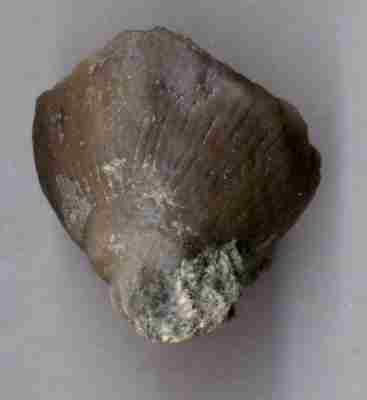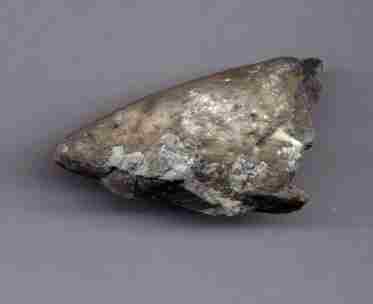Dry Dredgers Field Trip
March 26, 2005
Brookville, Indiana
Page 4: More Fossil Finds
Snails
We found quite a few snails, particularly Sinuites (pictured below).
Coral
Page 4: More Fossil Finds
Snails
We found quite a few snails, particularly Sinuites (pictured below).
Coral
A few different kinds of coral were found. None were abundant. The most abundant of these was the small solitary horn coral named Streptelasma. It's distinguished from Grewingkia by having attached to objects at it's point. This shows as a flattened edge to the point, rather than the sharp, straight point of the Grewingkia.

On many Richmondian sites, the Grewingkia horn coral are extremely abundant. In this site, however, they were hard to find. Here's one of them...

Just down the road, there was a road cut that gave us lots of the colonial coral, Tetradium. (below)
Trace Fossils
Every site has some trace fossils. Here's a rock with a bunch of tracks that I think were made by a worm.
Next Page: More Fossil Finds...
T A B L E O F C O N T E N T S
Page 1: Introduction and Collecting Photos
Fossils Found that Day
Page 2: Best Finds of the Day
Page 3: Crinoids, Pelecypod and Cephalopods
Page 4: Snails, Coral and Trace Fossils
Page 5: Brachiopods
Page 6: More Brachiopods
Page 7: Yet More Brachiopods
The Dry Dredgers and individual contributors reserve the rights to all information, images, and content presented here. Permission to reproduce in any fashion, must be requested in writing to admin@drydredgers.org .